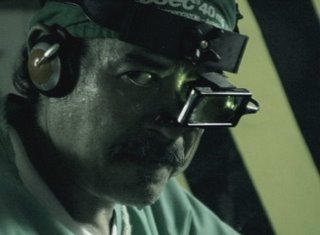I came upon Mowelfund in the early nineties. Now, it is possible to identify it as a time of transition, when the waters of film had begun to shrink under the rising sun of video, but desktop editing had not yet become available to the general populace. Super-8 had died. Kodak Philippines had discontinued processing it, and donated the behemoth developing machine to the Film Institute.
It was a purely symbolic gesture. The Institute had no use for it any more than Kodak did. It was a small, thirsty factory of a machine: built like a tank, designed to hold tens of gallons of reagents and process hundreds of rolls at a time. By the time I turned up it had already been rusting for a few years by the door of the converted house that sheltered the entirety of the Mowelfund instrumentality, an industrial-sized omen of the fortunes of celluloid.
Super-8 was dead, though it was to be a few years before LARRY MANDA was to confirm the truth with his film
Goodbye Miss Super-8. Hardcore users like NOEL LIM and RAYMOND RED still ordered their Super-8 stock from friends and relatives living abroad, and mailed their rushes off to Japan for development. It was a risky and dispiriting way to work. A month could go by before you discovered that your camera's light meter was screwed or that your stock was greenish, by which time your actors might have changed their hair, graduated or flown away. Welfare office shared space with the film institute in an atmosphere of sleepy Filipino nothing-doing punctuated by sudden bursts of fevered activity, as when Erap would hold free clinics for movieworkers, or around Christmas, when wave after wave of guild parties would ripple across the compound. Nobody knew that film was dying.
What was to take its place? Surely not the video that Surf Reyes' students were reduced to using in place of Super-8. True, Mowelfund had a full-fledged video editing suite in the back, that could do everything a suite in a commercial television station could do, but that was jealously guarded. People with an in like Patrick Purugganan or Mel Bacani could edit their opuses there, with frame-accurate sync, time-base correctors, genlocks and character generators, but most workshoppers had to make do with the consumer-grade cameras and video decks reserved for them. Linear Editing by pushing play and depausing the record function.
There must be an entire generation now who are unaware of how difficult it is to even perform a match cut on this kind of setup, or that it was completely impossible to perform a dissolve. Even the Super-8 guys had no dissolves in their arsenal, although JOEY AGBAYANI demonstrated in his film
Eye in The Sky that it was technically possible to perform in-camera double-exposures in Super-8. (Super-8 didn't come in spools, but cartridges. You had maybe a half-an inch of exposed film that, if you were crazy enough, you COULD try to inch in the wrong direction in a dark room for a couple of feet before the cartridge would seize up. I don't think even Joey tried this more than once.)
That was then, when NICK DEOCAMPO would imitate a particle accelerator in his classes, slamming 3 or 4 streams of postmodernist film theory with Filipino politics, hoping to flush the magnetic monopole of Third World Cinema Praxis from the chaos of his improvisations. He was the boss as well as the primary propagandist and fundraiser for the Film Institute, aside from being articulate, passionate, militantly gay and steeped in the theory of deconstruction. Nobody within a 200 kilometer radius with the balls to call him crazy, though I wonder if he didn't feel a little lonely, alone with all those philosophical toys that nobody else knew how to operate.
That was then, before the money finally came through and Nick was finally able to raze the old house where all the art-scum independents like ROXLEE and YAM LARANAS would while away the afternoons, raze it to the ground to make room for the building that would house his dream of a film school, which would serve as the nexus of film study and training for all of Southeast Asia, maybe even Asia. The man had nothing if he didn't have vision.
That was then. Before computers fell on the independent scene and blew it up.
